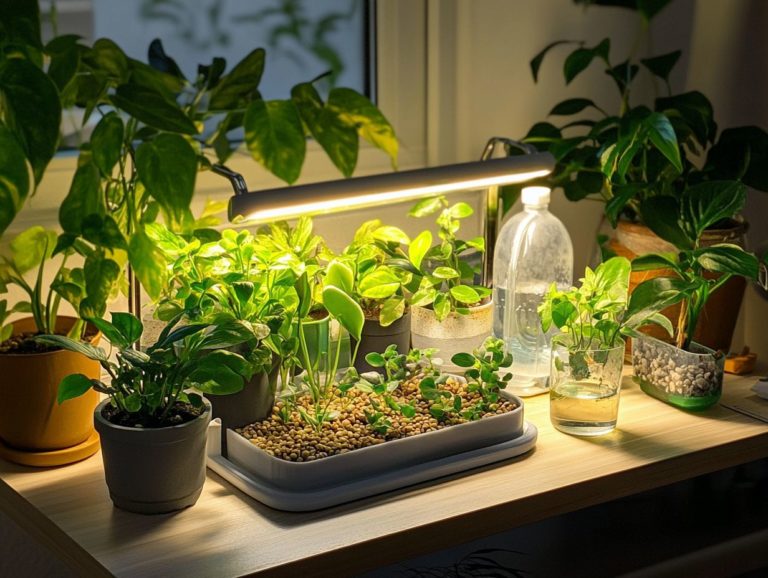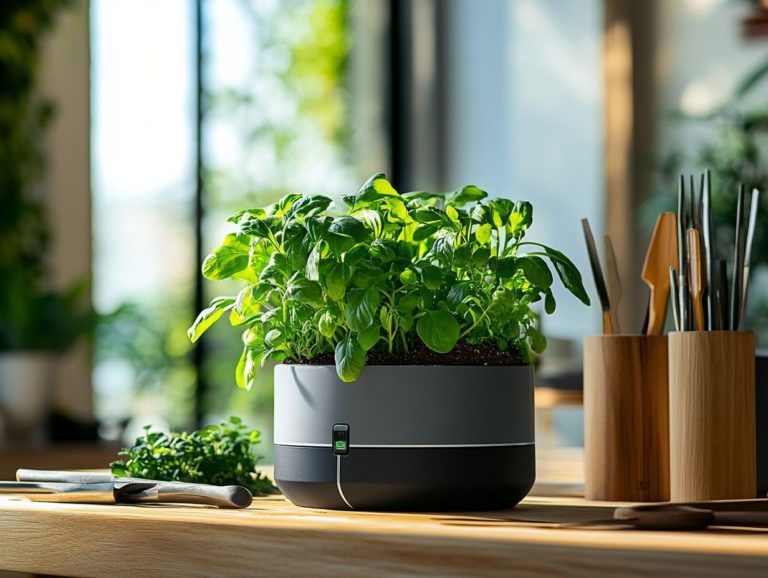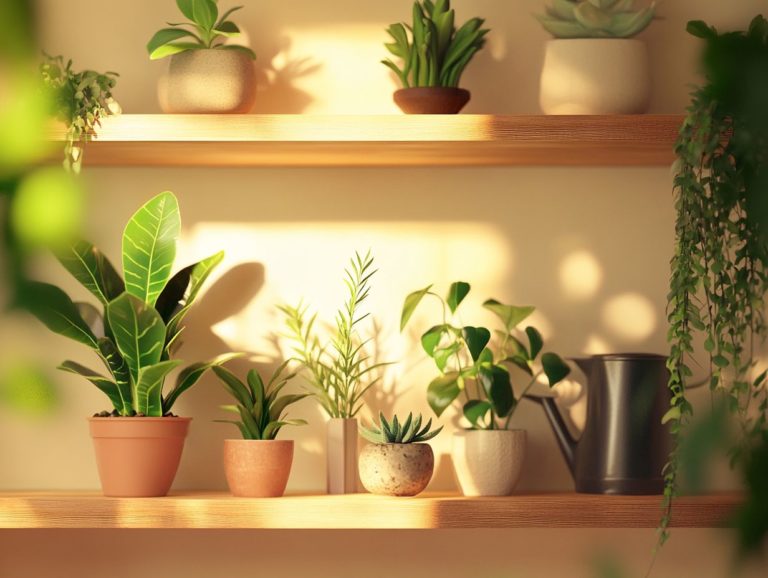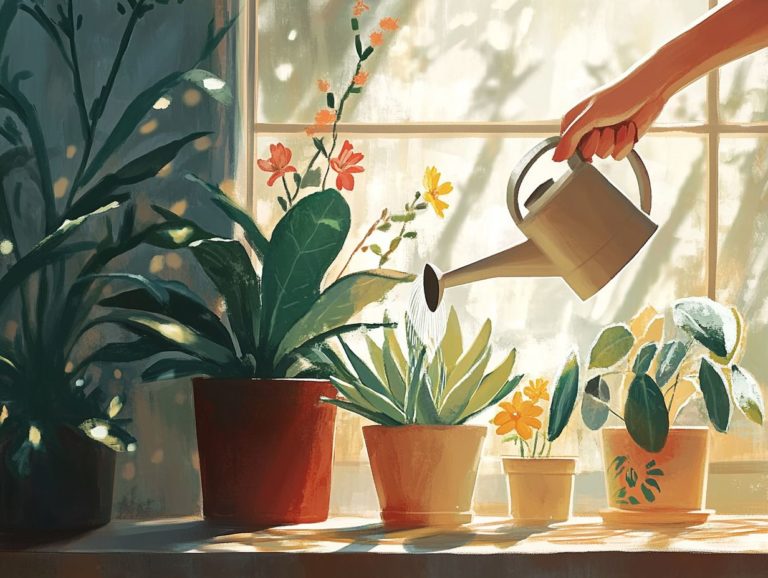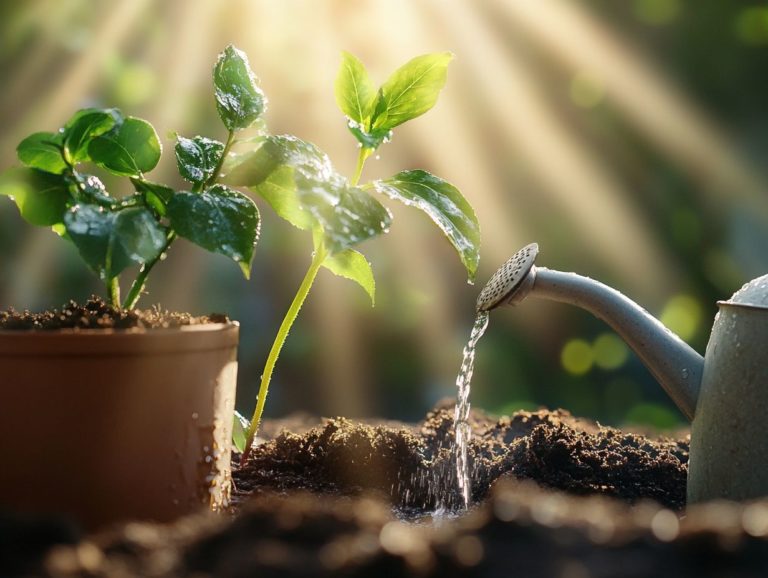When to Water Houseplants: A Seasonal Guide
Caring for houseplants can be both rewarding and challenging, particularly when it comes to grasping their water needs. Each season introduces unique conditions that influence how often and how much you should water your indoor plants.
From the rejuvenating warmth of spring to the dry air of winter, pinpointing the right watering frequency is essential for maintaining the health and vitality of your houseplants. Get ready to discover seasonal tips that will keep your houseplants thriving!
Contents
- Key Takeaways:
- Understanding the Water Needs of Houseplants
- Spring Watering Tips for Houseplants
- Summer Watering Tips for Houseplants
- Fall Watering Tips for Houseplants
- Winter Watering Tips for Houseplants
- Signs of Overwatering and Underwatering
- Frequently Asked Questions
- When should I water my houseplants in the winter?
- How often should I water my houseplants in the spring?
- Is it okay to water my houseplants less in the summer?
- Do I need to adjust my watering schedule for my houseplants in the fall?
- Should I water my houseplants on a specific day of the week?
- What is the best way to water my houseplants in the different seasons?
Key Takeaways:
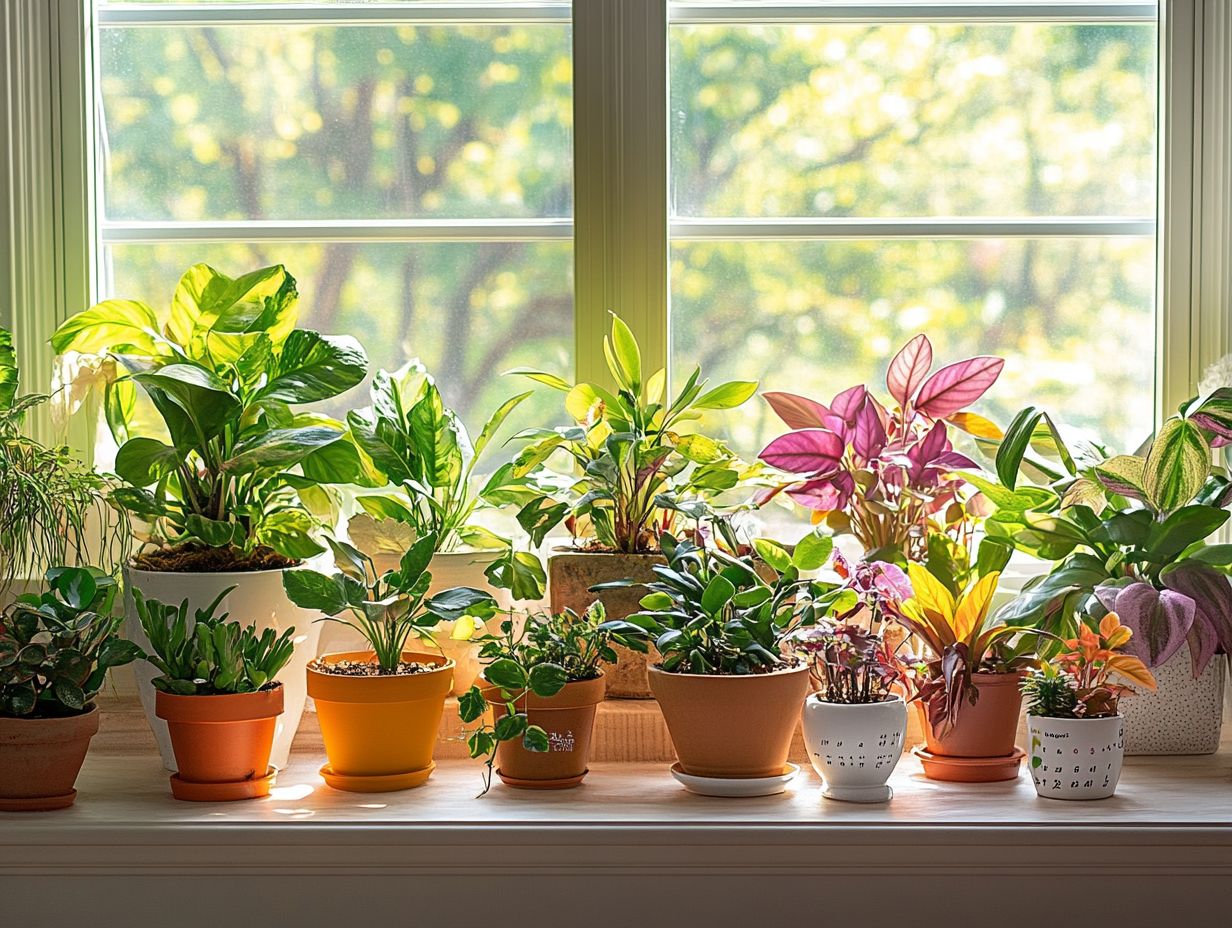
- Adjust your watering frequency based on the changing seasons and temperatures.
- Prevent overwatering during hot summer months by allowing the soil to dry out between waterings.
- Prepare houseplants for winter dormancy by reducing watering and increasing humidity, especially for moisture-loving plants.
Understanding the Water Needs of Houseplants
Understanding the water needs of your houseplants is crucial for any indoor gardening enthusiast. Each species has its own unique requirements influenced by surrounding factors, seasonal light levels, and growth habits.
Establishing a consistent watering routine not only supports the overall health of your plants but also helps prevent issues such as overwatering a condition where plant roots become damaged due to excessive water allowing your houseplants to truly thrive.
By familiarizing yourself with the specific needs of plants like ferns, snake plants, and Ficus benjamina, you can craft an effective care routine that addresses their varying moisture requirements, especially as they enter dormancy in winter.
Factors that Affect Watering Frequency
Several factors will significantly influence how often you need to water your houseplants, including temperature, humidity, soil moisture levels, and seasonal light changes.
Understanding these elements is vital for the health of your diverse houseplant collection. For example, cacti thrive in arid environments and require less frequent watering perhaps every two to three weeks, particularly during their winter dormancy.
On the flip side, Golden Pothos enjoys a more humid atmosphere and absorbs water more quickly. They often need a drink once the top inch of soil dries out, especially in the summer months.
By consistently monitoring soil moisture whether through handy tools like moisture meters or the simple finger test you can avoid the perils of overwatering and root rot, ensuring that your green companions flourish beautifully throughout the seasons.
Spring Watering Tips for Houseplants
As spring unfolds, your houseplants will start to revel in the increased light levels, igniting a surge in their growth patterns. This vibrant transformation calls for a careful reevaluation of your watering schedule and water-soluble fertilizer. Make sure each plant thrives in its optimal health.
Adjust your watering schedule this spring and watch your plants flourish!
Adjusting to Changing Temperatures
Adjusting your watering schedule in response to changing temperatures is essential for maintaining the health of your houseplants. Fluctuations in temperature and humidity can significantly influence their needs and overall care routine.
As spring approaches, bringing warm sunshine and longer days, your indoor plants will likely experience a burst of growth. It is vital to watch closely for their moisture levels.
To effectively assess and adjust your watering routine, consider the specific needs of each plant type, including their unique care requirements. For example, tropical plants like ferns or peace lilies may need more frequent watering, while succulents thrive on a less frequent schedule, especially during their winter dormancy.
It s crucial to check the soil s moisture level. A moisture meter is a tool used to measure if the soil is wet or dry, which helps prevent issues like root rot. Pay attention to changes in the leaves yellowing or drooping might signal they need more water, while brown tips could indicate overwatering.
By tuning into these cues, you can refine your approach and ensure that each plant receives the perfect amount of hydration as spring unfolds.
Summer Watering Tips for Houseplants
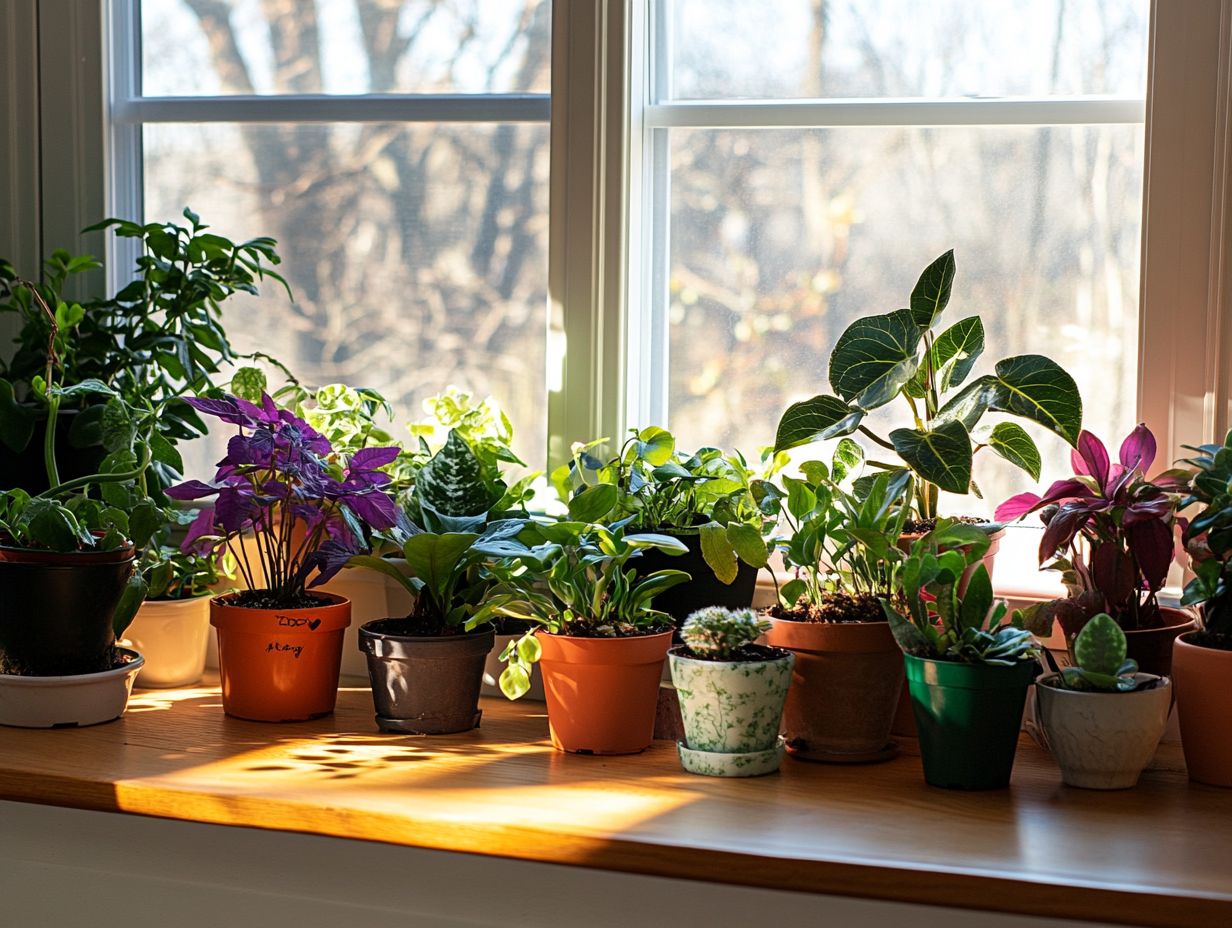
In summer, the warm weather calls for a thoughtful approach to watering your houseplants. With increased evaporation rates the speed at which water in the soil disappears and heightened growth, you must keep a constant watch on soil moisture.
Monitoring your plants closely helps you avoid common pitfalls like overwatering and root rot, ensuring your plants thrive during the season.
Preventing Overwatering in Hot Weather
Preventing overwatering during the hot summer months is essential for the health of your houseplants, especially for those that prefer drier conditions. Excessive water can lead to root rot, making it important to monitor your watering schedule.
Pay close attention to the drainage holes in your pots. Ensuring excess moisture can escape allows the roots to breathe and helps prevent sogginess, which can contribute to root rot. Implementing a proper watering technique is crucial as it directly impacts your plants’ overall health. Instead of sticking to a rigid schedule, check the soil moisture before deciding to water. This enhances your indoor gardening practice and tailors the frequency to meet each plant’s unique needs.
Don t overlook the importance of water quality. Using chlorine-free water can significantly enhance your houseplants’ well-being and support their growth patterns. By making these thoughtful adjustments, you can promote healthy growth and resilience, particularly during those sweltering summer days.
Fall Watering Tips for Houseplants
As fall approaches, it s the perfect moment to begin preparing your houseplants for winter dormancy. Adjust your watering routine to align with the shifting temperature and humidity levels that impact moisture-loving plants. This adjustment is vital for effective houseplant care.
Embracing these seasonal changes ensures your greenery thrives even during the colder months.
Preparing for Winter Dormancy
Preparing for winter dormancy means understanding how your indoor plants alter their water needs as they enter a resting phase. Adjust your watering schedule and plant care routine to avoid issues like overwatering and root rot.
As temperatures drop and daylight hours dwindle, it becomes crucial to recognize that many houseplants will significantly slow their growth, particularly during winter dormancy. This shift calls for a more mindful approach to their hydration. For instance, succulents and cacti, which thrive on infrequent watering, might require moisture only every few weeks during the colder months. On the other hand, tropical varieties like pothos or peace lilies may still need regular watering, though in smaller amounts.
To keep your plants healthy, closely monitor the soil moisture and adapt your watering routines accordingly. Maintaining adequate humidity levels will also support their well-being during winter’s dry air.
Start monitoring your plants now to ensure they thrive!
Winter Watering Tips for Houseplants
During winter, your houseplants encounter distinct challenges like dry air and reduced light levels. These factors can dramatically affect their watering needs, so it s crucial to adjust your indoor gardening practices to ensure their health and vitality.
As your plants respond to changes in light levels and humidity, careful monitoring becomes essential.
Dealing with Dry Air and Low Light
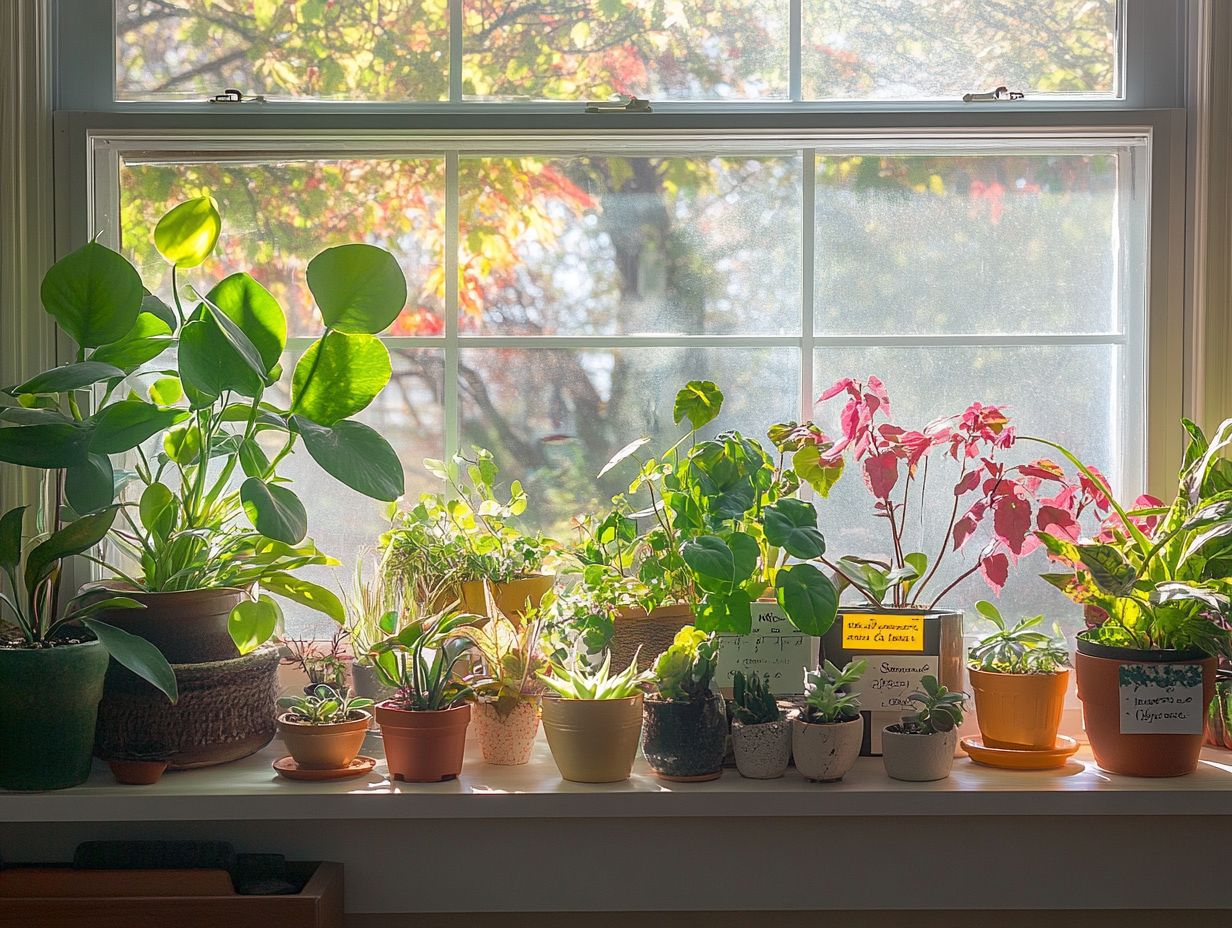
Dealing with dry air and low light during winter can complicate your watering schedule. Careful attention is required to meet their hydration needs.
To adapt your care routines effectively, consider a few simple steps to ensure optimal health for your houseplants. Increasing humidity can significantly benefit your indoor plants. You might incorporate a humidifier a device that adds moisture to the air or place trays filled with water and pebbles nearby to help maintain proper moisture levels.
Positioning your plants closer to south-facing windows can optimize their light intake. However, be mindful of sudden temperature changes that can affect their growth patterns.
It’s essential to reduce your watering frequency; overwatering in low-light conditions can lead to root rot. Using soil moisture testers can help you determine the right time to water, ensuring your plants receive just the right amount of hydration.
Signs of Overwatering and Underwatering
Recognizing the signs of overwatering and underwatering is crucial for preserving the vitality of your houseplants. Both can lead to significant problems, such as root rot or stunted growth.
How to Identify and Correct Watering Issues
Identifying and correcting watering issues is fundamental to effective houseplant care. Start by understanding whether your plant is suffering from overwatering or underwatering this can be as simple as checking the soil moisture levels.
You can utilize a moisture meter or just insert your finger about an inch into the soil to assess its dampness. This ensures your plants are thriving.
Along with examining the soil, pay close attention to your plant s health. Signs like wilting, yellowing leaves, or stunted growth often indicate a problem from improper watering.
If you notice signs of overwatering, such as fungus gnats or root rot, it s essential to adjust your watering schedule accordingly to prevent further damage.
If your plant is dry and brittle, increase your watering frequency and ensure there s adequate drainage to remedy these issues, particularly during the summer months.
Frequently Asked Questions
When should I water my houseplants in the winter?
In the winter, houseplants require less water due to the decreased sunlight and cooler temperatures. It’s important to monitor the soil’s moisture level and only water when the top inch is dry. Moisture-loving plants need close monitoring in dry conditions. Make sure to check them regularly!
How often should I water my houseplants in the spring?

In the spring, houseplants should be watered more frequently as they come out of their dormant state and begin to grow. Check the moisture level of the soil every few days and water when the top inch is dry.
The increase in light levels can greatly affect the watering frequency.
Follow these tips and watch your houseplants flourish this winter!
Is it okay to water my houseplants less in the summer?
During summer, houseplants often need more water because of the heat and sunlight. Be careful not to overwater, as this can lead to root rot. Always check how wet the soil is before watering.
Do I need to adjust my watering schedule for my houseplants in the fall?
In fall, houseplants usually need less water since they grow less actively. Keep an eye on the soil’s moisture and adjust your watering based on your home’s conditions.
Should I water my houseplants on a specific day of the week?
It’s best to water your houseplants based on the soil’s moisture rather than sticking to a strict schedule. Temperature, humidity, and plant type all play a role in how often you should water.
What is the best way to water my houseplants in the different seasons?
Water most houseplants at the base instead of on the leaves. Use room temperature water and make sure to soak the soil well. In winter, a watering can with a long spout can help you avoid the leaves. You can also use a water-soluble fertilizer during the growing seasons for extra care.

